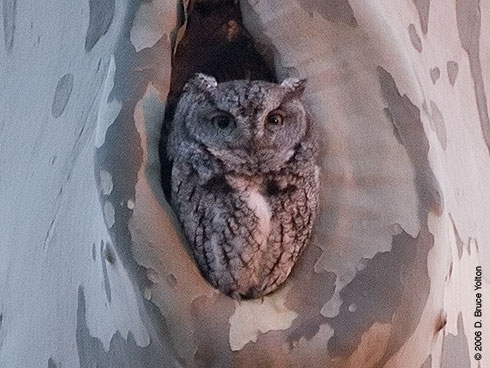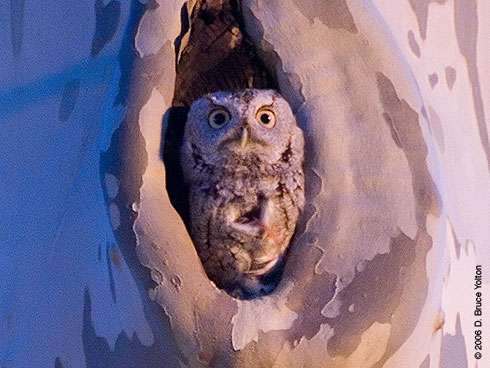

Over the last year, I’ve photographed a pair of Eastern Screech-Owls (Otus asio) living in a tree cavity along the West Drive of Central Park. The owls only use this cavity between November and April each year, returning to tree branches in the warmer months.
Eastern Screech-Owls were re-introduced to Central Park after an absence of about thirty-five years as part of a controversial biodiversity project called Project X. For the most part, this program was a failure, and has been deemed by some to be more about politics than science.
I first photographed the owls when I started birding in Central Park in the Spring of 2005.
This blog follows the owls in detail from mid-February through early April of 2006. Concerned that publicity could be harmful to these birds, I choose to delay making these blog entries public until after the birds left the cavity.
The story has an unhappy ending, revealing one of the realities of nature, birds have an incredibly high mortality rate. For Eastern Screech-Owls in a wild environment, this is a 70% mortality rate in the first year of life and a 30% mortality rate thereafter. (If you’re looking for a happy story, you may not want to read further.)
These photographs were all taken with natural light. Advances in digital photography make it possible to take pictures in very low light. The photographs were taken with either a 400mm or 500mm lens at distances of 50-200 feet.
As the nights darkened, natural light sometimes was replaced by orange street lamps. You’ll notice some color shifts in the photographs. To have avoided this completely, I would have needed to use flash. I decided that I would rather have the color shifts than risk disturbing the owls with repeated flashes.